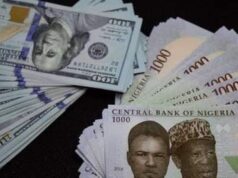
By JONATHAN LAINTARA VISHWANATH
FRI, 16 SEPT, 2022-theGBJournal| In September 2022, the World Bank is set to launch a series of new international poverty lines, as the data on prices that are used compare different countries are being updated. This has profound implications for poverty estimates in some countries. Nigeria’s poverty rate at the new extreme international poverty line of $2.15 in 2017 prices is about 8 percentage points lower than at the previous line of $1.90 in 2011 prices. This represents a difference of more than 15 million people.
Nigeria’s poverty estimates are hugely important for regional and global poverty measurement, as the country is the largest contributor to poverty in Sub-Saharan Africa, the world’s poorest region. So where does this difference come from? And how should it be interpreted?
For international poverty estimates, it is necessary to harmonize the metrics – typically consumption or income – which are used to capture welfare by adjusting them for cross-country differences in the cost of living. Using market exchange rates alone is generally not sufficient for adjusting for cost-of-living differences between countries. Instead, it is better to make these adjustments using detailed data on the prices of key food and non-food items in each country. The conversion factors resulting from this exercise are known as purchasing power parities (PPPs). Using PPPs makes it possible to express countries’ welfare levels in one currency (typically USD) and compare them with one set of unified international poverty lines.
For many years, the PPPs used for global poverty estimates were based on data collected in 2011, but this is changing. New PPP price data were collected from virtually all countries in 2017. From September 2022 onwards, these new 2017 PPPs will be used to adjust each country’s welfare metrics and hence calculate poverty numbers at the international poverty lines.
In turn, the international poverty lines themselves have to be updated, to be expressed in 2017 USD rather than 2011 USD. Previously the international extreme poverty line – the one most typically reported – was set at $1.90, in 2011 prices. Now the international extreme poverty line will be $2.15, in 2017 prices. This does not mean that the poverty line is being raised; it is simply being adjusted for the fact that prices change over time.
Updating the PPPs and international poverty lines changes estimates of the poverty headcount rate little at the global level, yet the implications for specific countries are much larger, especially Nigeria. About 41.4 % of Nigerians were estimated to be living in extreme poverty in 2017, as per the $1.90, 2011 PPP poverty line; this is calculated using the 2018/19 Nigerian Living Standards Survey (NLSS) along with the standard interpolation methods applied by the Poverty and Inequality Platform (PIP) to produce poverty numbers in a given year. By contrast, Nigeria’s poverty headcount rate for 2017 is estimated to be much smaller – at 33.4 % – if the $2.15, 2017 PPP line is used instead. This marks a difference of 8.0 percentage points, some 15.2 million Nigerians.
Yet this does not mean that poverty has gone down in Nigeria. Assuming the new 2017 PPP data are more accurate, this instead means that the previous 2011 PPP data were overestimating the cost of living in Nigeria as compared to other countries. In other words, the 2011 PPP data were giving the impression that goods and services were relatively more expensive in Nigeria, such that Nigerians’ purchasing power was lower and more Nigerians were living below the international poverty line. Relatedly, for Nigeria, this means that the $1.90, 2011 PPP poverty line is actually higher than the $2.15, 2017 PPP poverty line. The former corresponds to around 135,457 naira per person per year – or specifically, 2018/19 naira, to match the latest NLSS – while the latter corresponds to 117,342 naira per person per year.
Yet, while the 2017 PPP data are more recent, at the country level there is no guarantee that they are more accurate than the 2011 PPP data. In particular, the markets or areas of each country covered by the PPP data collection exercises in 2011 and 2017 may differ. Moreover, some countries were affected by severe shocks – including the Ebola crisis and the collapse of commodity prices – when the 2017 PPP data were being collected. Nigeria could have been affected by all of these issues. Therefore, additional analysis, using the price data collected by Nigeria’s National Bureau of Statistics (NBS), will be needed to understand what drives the differences between the 2011 PPPs and 2017 PPPs as well as the knock-on effects on Nigeria’s poverty estimates at international poverty lines.
Nevertheless, updating the PPPs and international poverty lines does not significantly affect the implied poverty trends for Nigeria (see Figure 1). Regardless of whether the $1.90, 2011 PPP or the $2.15, 2017 PPP poverty line is used, poverty reduction remained fairly stagnant in the 2010s. According to survey-to-survey imputation techniques using Nigeria’s General Household Survey (GHS), it first dropped slightly until the middle of the decade, but these gains were reversed following the 2016 recession, sparked by the collapse in oil prices.
Figure 1. Estimates of the poverty headcount rate in Nigeria using the $1.90, 2011 PPP poverty line and the $2.15, 2017 PPP poverty line

Overall, poverty estimates at international poverty lines matter mainly for cross-country analysis, but for Nigeria’s policymakers it is the national poverty line that will remain the key yardstick. Nigeria is not alone in this regard; countries around the globe use their respective national lines for policy-relevant analysis. Given its high data quality, the 2018/19 NLSS was used to create a national poverty line, specific to Nigeria’s socio-economic conditions, based on the country’s demographic characteristics, the population’s caloric needs, and the food and non-food goods consumed by Nigerians.
This national poverty line was set at 137,430 naira per person per year in 2018/19 prices and was launched alongside key poverty and inequality statistics by NBS in May 2020. According to this line, around 4 in 10 Nigerians (40.1 %) were living in poverty in 2018/19. The national poverty line has underpinned many policy-relevant reports in recent years – including Nigeria’s 2022 poverty assessment – and will continue to be the basis of new analysis going forward.
Preparations are currently underway to collect a new round of the NLSS in 2022 and 2023. This will provide crucial insights into how both monetary and non-monetary indicators of welfare have moved in Nigeria, following the COVID-19 crisis and the ongoing acceleration in inflation. Regardless of the specific poverty lines applied, these new data will provide a unique opportunity to generate policy-relevant evidence for Nigeria’s policymakers, and help the country meet its ambitious target of lifting all Nigerians out of poverty by 2030.
Q&A
Why raise the international extreme poverty line to $2.15 per person per day? What was wrong with the $1.90 $ per person per day line?
The poverty line has not really gone up.
In order to make comparisons between different countries it is necessary to harmonize the welfare metrics – be they consumption or income – to reflect differences in the cost of living. This is done by collecting detailed price data from each county, which are then used to produce conversion factors known as purchasing power parities (PPPs). Using PPPs makes it possible to express countries’ welfare levels in one currency, USD, in which the international poverty lines are expressed.
For many years, the PPPs were constructed using data from 2011; but now they are being updated using newly collected price data from 2017. This means the international poverty lines have to be updated too, to be expressed in 2017 USD rather than 2011 USD.
The $2.15 (2017 PPP) line is only “higher” because the cost of purchasing basic food, clothing, and shelter in low-income countries increased between 2011 and 2017. Therefore, the real value of $2.15 in 2017 prices is the same as $1.90 was in 2011 prices.
How can the poverty line go up and poverty go down?
As the previous answer explains, the international poverty line has not really gone up; but it is certainly true that poverty in Nigeria appears to be lower estimated using the 2017 PPPs and the $2.15 line rather than the 2011 PPPs and the $1.90 line. In fact, the difference is as large as 8 percentage points – more than 15 million Nigerians. Nigeria is not the only country affected by this issue.
The new 2017 PPP-based estimates do not mean that poverty has truly gone down in Nigeria. Instead, assuming that the new 2017 PPP data are more accurate, this means that the previous 2011 PPP data were overestimating the cost of living in Nigeria as compared to other countries. In other words, the 2011 PPP data were giving the impression that goods and services were relatively more expensive in Nigeria, such that Nigerians’ purchasing power was lower and more Nigerians were living below the international poverty line. Assuming the new PPPs are more accurate, they simply correct for this previous overestimation issue.
Nevertheless, there is no guarantee that the 2017 PPP are more accurate at the country level. Many countries, including Nigeria, faced shocks during data collection and the markets or areas covered may differ from 2011. More work will be needed to understand the differences between the 2011 PPPs and the 2017 PPPs in Nigeria.
What yardstick should Nigeria use for programs and policies?
While poverty estimates at international poverty lines are useful for cross-country analysis, the national poverty line should remain the focus of Nigeria’s policymakers. Nigeria is fortunate enough to have high-quality data from the 2018/19 Nigerian Living Standards Survey (NLSS), which enabled a national line – specific to Nigeria’s socio-economic conditions – to be constructed. This national line was set at 137,430 naira per person per year in 2018/19 prices and was launched by Nigeria’s National Bureau of Statistics (NBS) in May 2020.
The national poverty line has underpinned many policy-relevant reports in recent years – including Nigeria’s 2022 poverty assessment – and will continue to be the basis of new analysis going forward.
Jonathan Lain is an Economist in the World Bank’s Poverty and Equity Global Practice, working in the Western and Central Africa and Tara Vishwanath is a Lead Economist and a Global Lead of the Global Solutions Group for Welfare Implications of Climate, Fragility, and Conflict Risks in the Poverty and Equity Global Practice of the World Bank.
Articles was originally published by the World Bank Blogs
Twitter-@theGBJournal| Facebook-The Government and Business Journal|email: gbj@govbusinessjournal.ng|govandbusinessj@gmail.com









